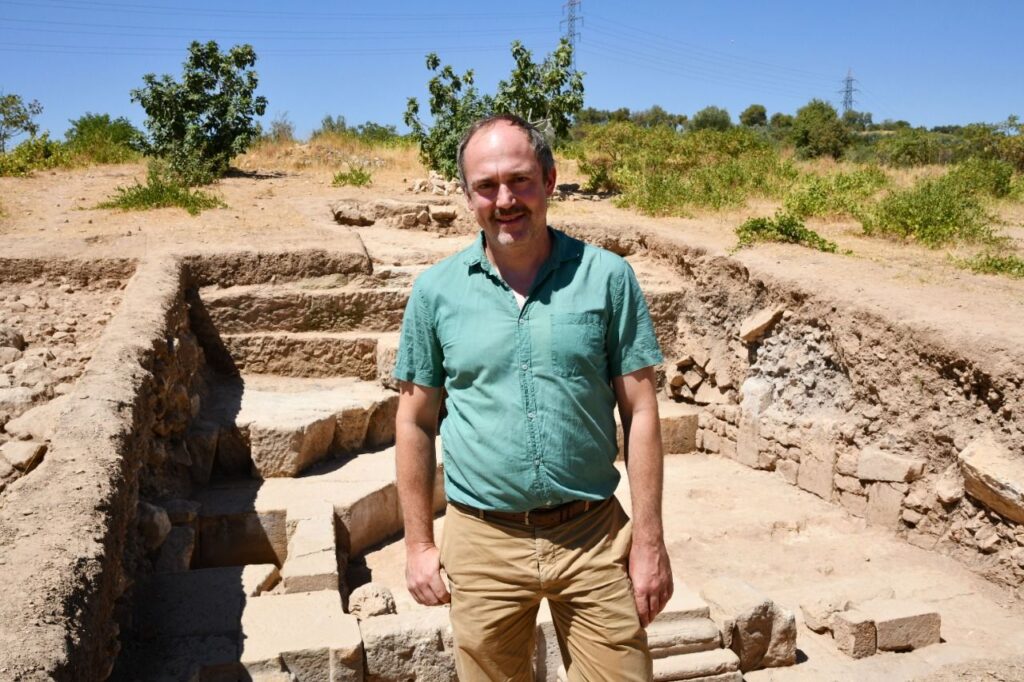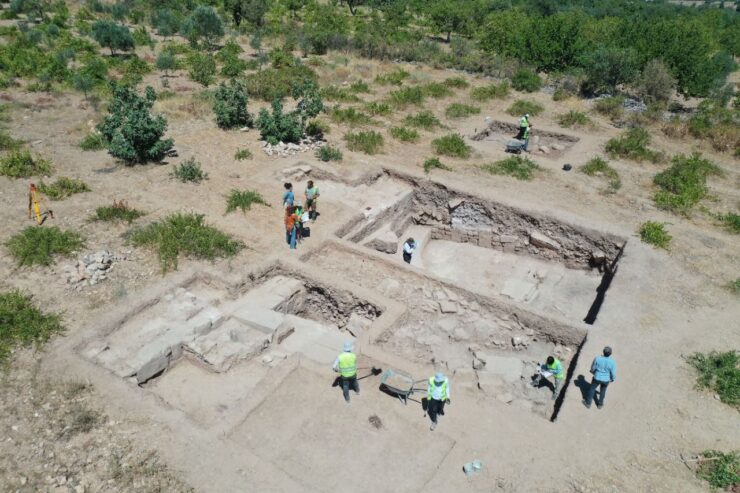The new season excavations started in Dülük Ancient City, which is shown as one of the 25 oldest settlements in the world, and it is aimed to reveal the belief and architectural structure of the period.
The ancient city of Dülük is located 10 kilometers north of Gaziantep city center. This year’s part of the excavations carried out in cooperation with the Ministry of Culture and Tourism and the University of Münster in Germany has started.
Head of the excavation, Prof. Dr. Michael Blömer, lecturer at Münster University, and his assistant Dilek Çobanoğlu accompanied the excavations on Keber Hill, where the ancient city is located.
Blömer told AA that he has been working in this area for 20 years, but it is the first time he is here as the excavation director and he is very happy about it. He said that Dülük Ancient City is very important for Gaziantep and its region.
Stating that a Roman temple was discovered during the excavations last year, Blömer said, “Since it is the largest temple in this region, we will continue to work on it this year, we will expand the excavation area. This is probably a temple renovated by the Roman emperor. This year, we aim to examine the eastern part of the temple in more detail. We aim to reveal what this place was used for and how it was used. We already know Dülük Baba Hill, we know the Temple of Mithras, but the Roman Temple was discovered for the first time and we will reveal the religious center of the region in terms of religion. This is a new place.” said.



Regarding the architecture of Roman temples; “We now see the apse in the layer at the excavation site. This apse is very important for the architecture of Roman temples. We have discovered this as well. This is a large temple, we will try to uncover more information about the architecture.” he said.
He said that the temple belonged to a pagan period, a period before Christianity and Islam. “There are many gods of that era, but we have not yet discovered which god it was made for, we aim to reveal it.”
Dülük Ancient City, located at the crossroads of trade routes extending from the south, north, east and west in the ancient period, on the route of the Silk Road stretching from Mesopotamia to Cilicia in the Assyrian period, and from Antakya and Cilicia to Zeugma in the Hellenistic and Roman period, It dates back thousands of years before Christ.
In addition to the Stone Age, artifacts from the Copper Age and the oldest known mathematical operations can be found in this ancient city, which also has traces of the Rough Stone Age.
The ancient city, which relay between the Hittites, Medes, Assyrians, Persians and Alexander empires, conveys the knowledge of many civilizations with its artifacts and historical structures. In the city, where the Mithraic belief was dominant for a period, there is the largest of the Mithras temples built underground.
